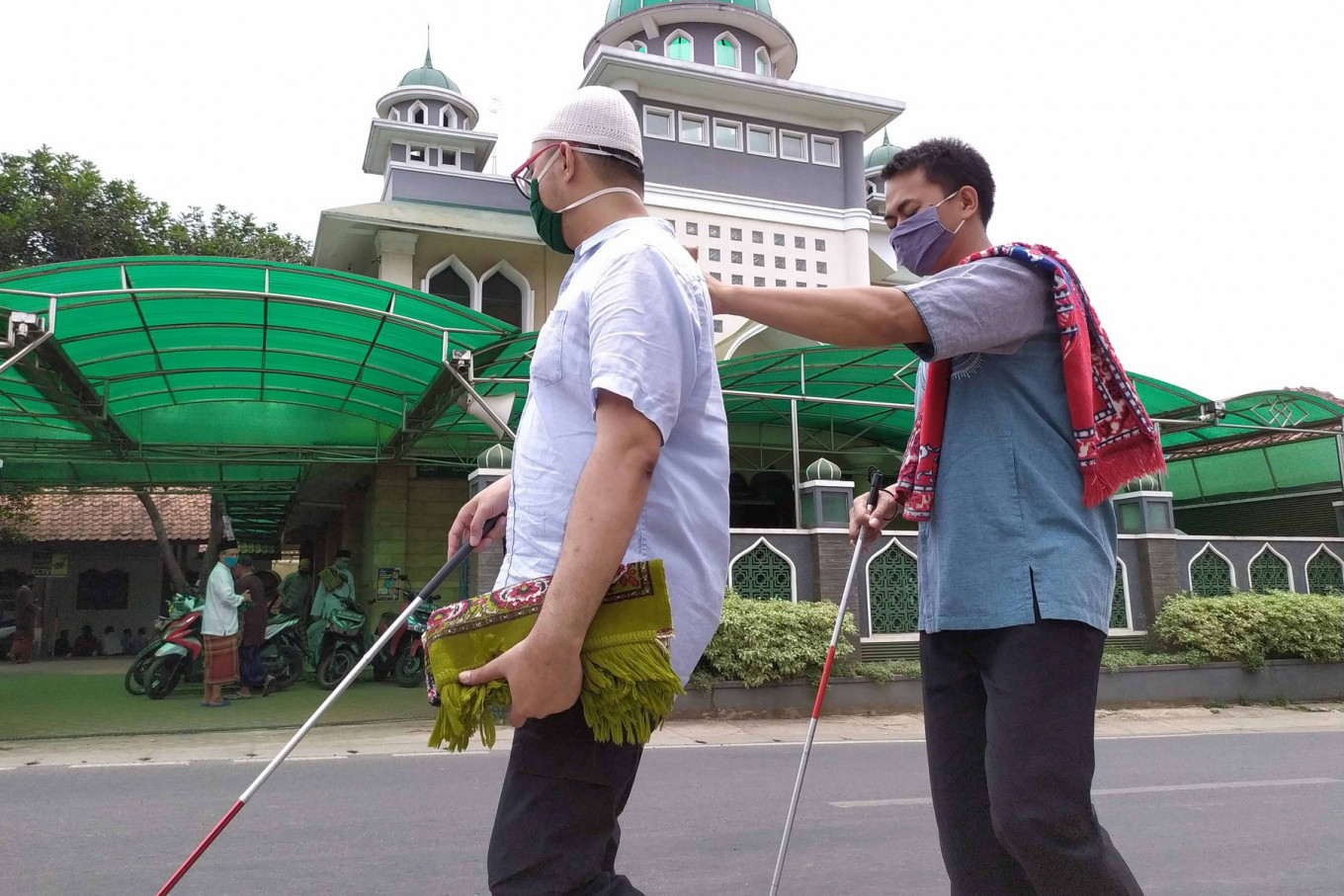Popular Reads
Top Results
Can't find what you're looking for?
View all search resultsPopular Reads
Top Results
Can't find what you're looking for?
View all search resultsWest Java NGO launches smart cane for people with low vision
The cane is connected to an application that can warn users when they get lost.
Change text size
Gift Premium Articles
to Anyone
T
he Bandung-based NGO Syamsi Dhuha Foundation (SDF) in West Java has launched a smart walking cane called BriCane for the visually impaired to help their mobility.
The cane is connected to an application that can warn users when they get lost, said SDF head Dian Syarief.
Dian, who has low vision herself, said the BriCane was developed from a model that won a design competition for tools for the visually impaired in 2017.
The upgrade on the cane was carried out by Hardtmann Mekatroniske, a group of alumni of the Bandung Institute of Technology (ITB), with the help of the ITB’s product design and biomedical study program.
Physically, BriCane is not so much different from usual canes made for visually impaired people. However, the cane has a box close to the user's hand that contains a device connected to an application.
“The innovation of the BriCane is its ability to help users when they get disoriented,” Dian said.
The BriCane also has sound and motion sensors that will alarm users when they are at risk of tripping over something. Moreover, at the bottom of the stick, there is support that will help users go up and down the stairs or a hill.
Dian said the BriCane could become an alternative to imported smart canes, which cost around Rp 9 million (US$ 612) apiece.
“It’s more affordable as it is 60 to 70 percent cheaper than the imported products,” she said.
The launch of the smart cane was part of efforts to help the visually impaired remain active and productive, Dian said, adding that besides procurement of aid, skills training and early detection for sight issues could also help prevent further vision damage.
SDF, a non-profit organization focusing on low vision, also operates the Low Vision Center in Bandung, which was launched in 2016 with the purpose of becoming an institution that supports research for the development and modification of low-vision tools. The center also facilitates the visually impaired to interact and be creative, SDF manager Laila Panchasari said.
According to the International Agency for the Prevention of Blindness (IAPB), 43 million people across the world currently suffer from blindness and 295 million people have low visions, most of whom live in developing countries. In Indonesia, 3.7 million people are blind and 10.8 million suffer low vision. (aly)










